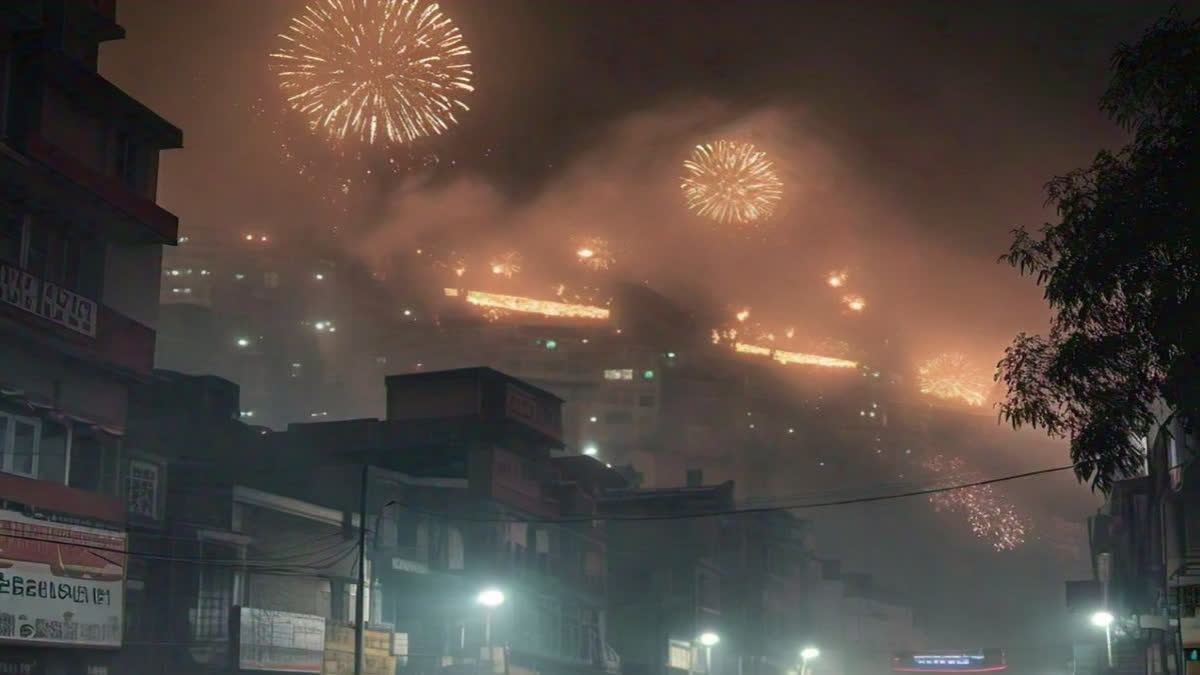Bhubaneswar: The Capital city and nearby cities in Odisha are grappling with worsening air quality, as post-Diwali smog blankets the region, severely impacting visibility and health. Under the pretext of going green, this Diwali saw people indulging in bursting fire crackers in a big way showing no concern for pollution and neither did they stick to the mandated time fixed by the pollution control board.
The Odisha Pollution Control Board reported that the Air Quality Index (AQI) reached alarming levels across several cities, particularly in Bhubaneswar, where Lingaraj station recorded an AQI of 228 early Saturday morning, categorizing the air as 'poor.'
Agricultural scientist Amaresh Khuntia from the Orissa University of Agriculture and Technology (OUAT), blames the extensive use of fire crackers on both the days, Diwali and a day after. The thick smog on Friday evening and Saturday early morning lowered visibility to 50–100 meters. He attributes the phenomenon to the excessive use of firecrackers and 'green' fireworks, which emit considerable smoke and fine particles, creating a haze that remains trapped in the atmosphere. “The high levels of smog observed in Bhubaneswar since Diwali are not just due to traditional air pollution but also from ‘green’ fireworks, which produce a lot of particulate matter,” Khuntia explained.
According to AQI data, Bhubaneswar’s Patia station recorded an AQI of 134, while Talcher reported a high of 233. In other cities, the air quality also deteriorated, with Cuttack registering 171 AQI and Rourkela at 190. An AQI of 181 was recorded in Bhubaneswar city overall, posing risks to sensitive groups. The Pollution Control Board warned that if conditions persist, the AQI could escalate further, raising public health risks, particularly for respiratory and heart patients.
